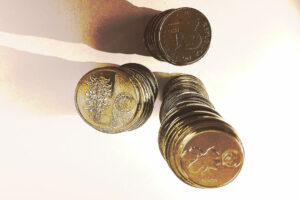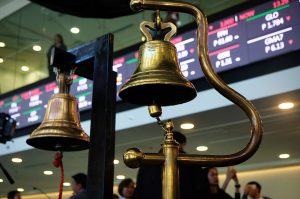By Luisa Maria Jacinta C. Jocson, Reporter
THE PHILIPPINES saw its dollar reserves soar to its highest level in over two years, preliminary data from the Bangko Sentral ng Pilipinas (BSP) showed.
Gross international reserves (GIR) rose by 1.8% to $104.48 billion as of end-May from $102.65 billion as of end-April.
This was also 3.9% higher than the $100.59 billion in the same period a year ago.
The dollar reserves were also at its highest level in 25 months or since the $105.4 billion recorded in April 2022.
“The month-on-month increase in the GIR level reflected mainly the National Government’s (NG) net foreign currency deposits with the BSP, which include proceeds from its issuance of Republic of the Philippines (ROP) global bonds, and net income from the BSP’s investments abroad,” the BSP said.
Ample foreign exchange buffers protect the country from market volatility and ensure that it is capable of paying its debts in the event of an economic downturn.
The level of dollar reserves as of end-May is enough to cover about 5.9 times the country’s short-term external debt based on original maturity and 3.6 times based on residual maturity.
It is also equivalent to 7.7 months’ worth of imports of goods and payments of services and primary income.
The value of the central bank’s gold holdings declined by 2.3% to $10.02 billion at end-May from $10.26 billion a month ago. It likewise dropped by 1.8% from $10.21 billion in the same period in 2023.
BSP data show that foreign investments stood at $89.02 billion, up by 2.2% from $87.13 billion as of end-April and higher by 5% from $84.76 billion a year earlier.
Meanwhile, net international reserves increased by 1.8% to $104.46 billion as of end-May from $102.59 billion as of end-April.
Net international reserves refer to the difference between the BSP’s reserve assets (GIR) and reserve liabilities, including short-term foreign debt, and credit and loans from the International Monetary Fund (IMF).
The BSP’s reserve assets also include foreign investments, foreign exchange, reserve position in the IMF and special drawing rights (SDR).
Reserves with the IMF inched up by 0.15% to $737.2 million as of end-May from $736.1 million a month earlier, but fell by 7.5% from $797.2 million in the same month a year ago.
SDRs — or the amount which the Philippines can tap from the IMF’s reserve currency basket — edged higher by 0.2% to $3.749 billion as of end-May from $3.741 billion in the month prior and went up by 0.13% to $3.753 billion in 2023.
Rizal Commercial Banking Corp. Chief Economist Michael L. Ricafort said that the rise in dollar reserves was due to higher foreign investments and foreign exchange holdings amid the government’s recent dollar bond issuance.
The Philippines raised $2 billion from its issuance of dual-tranche fixed-rate dollar bonds in May, its first global bond sale for the year.
John Paolo R. Rivera, president and chief economist at Oikonomia Advisory & Research, Inc., said that the increase in GIR may be due to positive valuation adjustments in the value of the BSP’s gold holdings.
“The price of gold in the world market has been increasing in recent months. It is also an indication of net income from BSP’s foreign investments. This can also be due to foreign currency inflows from other instruments,” he said in a Viber message.
Mr. Ricafort said that the GIR level could continue to improve in the coming months.
“The country’s GIR could still be supported by the continued growth in the country’s structural inflows from overseas Filipino workers’ remittances, business process outsourcing revenues, exports (though offset by imports) (and) relatively fast recovery in foreign tourism revenues,” he said.
The BSP is expecting a GIR level of $103 billion for this year.





